Porcelain Dental Crowns
What Makes One Type Better Than Another?
Dear Doctor,
My dentist told me that the porcelain crowns he provides are of a better quality than my insurance will fully cover. Is this true?
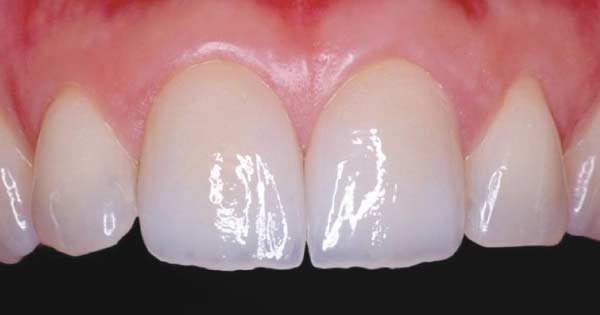 |
| An excellent dental laboratory can make a porcelain crown so natural-looking that you can’t tell any difference between the crown and your own teeth. |
Dear Sheila,
While I can’t address your specific case without knowing more details, I can certainly tell you that there are big differences among crowns. Dental insurance benefits will go farther when used to pay for only the most basic restoration — something that will simply make your tooth functional again, with the aesthetics being perhaps acceptable but not necessarily an ideal match. Today’s dentistry can do so much more.
Let’s examine the different types of crowns available today, and what goes into determining their cost. As you will see, quality has even more to do with artistry and skill than it does with materials and technology.
Transforming a Tooth
As you may know, a crown entirely caps a tooth from the gum line up. This type of restoration might be needed if a tooth is badly decayed, worn, fractured, or is in need of a cosmetic makeover. In preparing your tooth to receive this type of restoration, your dentist will remove decayed tooth material if there is any, and then shape what remains of the tooth to fit inside its new covering.
The dentist then takes an impression of the prepared tooth with a putty-like material or digital equipment to create an exact model of the tooth that will receive the crown and the teeth that will surround it. This impression will likely be sent to a dental laboratory, since relatively few dentists have the technology to fabricate crowns in-house. Just as you seek a dentist who makes you feel comfortable and whose work you respect, your dentist looks for the same qualities in a dental lab. In either case, a good working relationship is likely to last a long time.
The lab can make a porcelain crown out of any of several dozen different materials, which can basically be divided into two categories: porcelain fused to metal and all-porcelain (ceramic). Let’s take a closer look at both of these options:
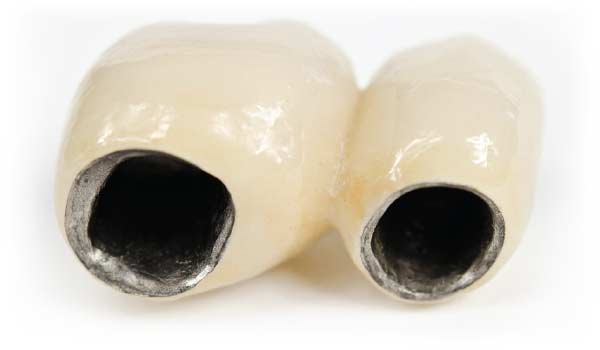 |
| Looking inside these dental crowns, you can see the metal substructure to which the porcelain is adhered for increased strength. |
Porcelain Fused to a Metal Base. While some crowns are made entirely of a precious metal (such as gold), crowns in the aesthetic zone (your smile) are covered by tooth-colored porcelain. The original dental porcelains, while providing good aesthetics, were quite brittle. Being glass-like in composition, they were prone to breakage if too much force was applied. To increase strength, porcelain-fused-to-metal (PFM) crowns were developed whereby a metal base or substructure was covered in tooth-colored porcelain. PFM was the most widely used type of crown until recently. In 2005, for example, 83% of all crowns were PFM; it’s now dropped to about 40%. That’s because newer dental ceramics have become available that don’t need a metal substructure — which can show through the porcelain in a PFM crown, graying or darkening its appearance, particularly at the gum line.
All-Ceramic. In 1993, materials arrived that allowed skilled professionals to reach new heights of realism in cosmetic dentistry. The first was Lucite-reinforced ceramic, a tooth-colored porcelain that could provide strength without metal. According to the latest research, 93.4% of the Lucite-reinforced all-ceramic restorations that have been in place for 15 years are still holding up. But that was only the beginning.
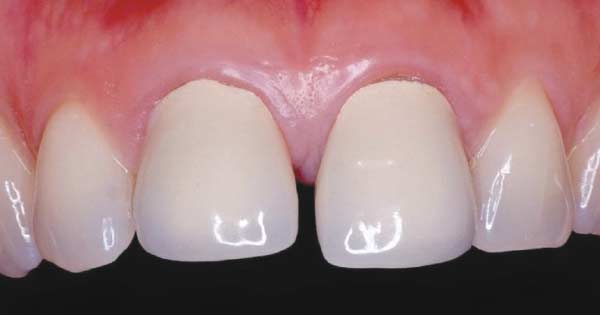 |
| The crowns on these two front teeth do not achieve the level of artistry and realism that is possible with state-of-the-art dentistry. |
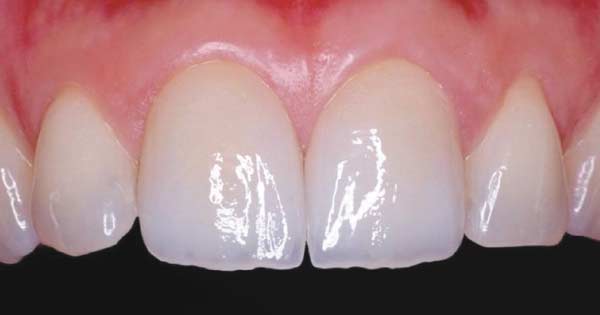 |
| With new all-porcelain crowns, it is now impossible to distinguish these teeth from the adjacent natural teeth. |
Starting in the new millennium, other highly realistic tooth-colored materials became available with various degrees of strength and visual appeal. These include lithium disilicate and zirconium oxide (the strongest porcelain). About 60% of the crowns made today are made with one of these all-ceramic materials. While these newer materials don’t yet have the track record of Lucite-reinforced ceramic, the early data is very encouraging. One recent study comparing newer materials to older porcelains showed that the newer porcelains were able to tolerate stress (load) comparable to metal-ceramic bridges — the “gold standard” for bridgework longevity.
Another change took place in the present decade: the more widespread use in dental laboratories of milling machinery that can sculpt a crown from a single block of material rather than necessitating fabrication by hand. Even with this method, however, the technician (or dentist, if the work is being done in-house) still needs to hand-finish it so that it truly resembles a natural tooth. More on that later.
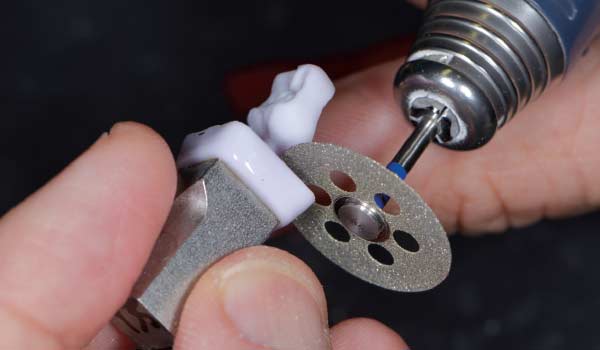 |
| A crown can be sculpted from a block of porcelain, either in a dental lab or in dental offices that have milling machines. |
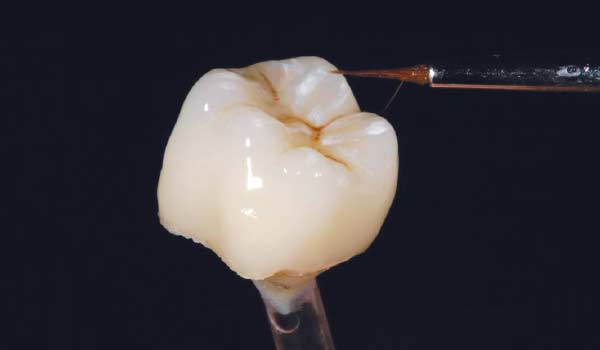 |
| A milled crown still needs hand-finishing for a truly realistic appearance. |
Not all materials work well in every situation. Generally, you want a stronger material for back teeth that bear the most chewing force, and a more realistic-looking material for teeth that show when you smile. All-ceramic crowns that look the most like teeth will also be the most expensive. However, this is not because the materials cost a lot; it’s because of the labor involved to create what is essentially a work of art.
It Isn’t Paint by Numbers
Take a look at your teeth. Do they look like Chiclets — uniformly white and blocky? No. Natural teeth have subtle variations in shape, color and transparency. To mimic this in a crown, a skilled technician might apply as many as 15 different colors of liquid porcelain by brush to a tooth form that began as a meticulously hand-sculpted wax model. This level of artistry is what will cost top dollar.
Now we get to the heart of your question: Is a crown made of the most modern dental materials and hand-finished to be virtually indistinguishable from a natural tooth worth the extra money? That depends on what is most important to you. If you want the best possible price, be assured that any dentist proficient in cosmetics working with any competent lab should be able to give you a crown that fits the tooth well, allows you to chew comfortably, and will hold up at least a decade with proper oral hygiene — outside of uncontrollable circumstances.
On the other hand, if you’re looking for the best workmanship with the most aesthetic result, the price tag may be higher. Keep in mind that some dentists will only work with labs that produce the highest-quality product.
I can understand your reluctance to pay more than you have to — any smart shopper would take that view — but I will just leave you with one final thought: If you see dental services advertised for rock-bottom prices, beware. Someone who is charging significantly less may make your insurance company happy, but is probably not going to provide you with state-of-the-art cosmetic dentistry.





